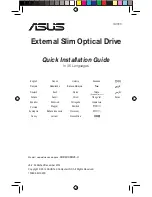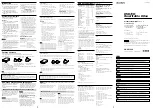
English (GB)
15
9.1.5 Relay outputs
• Interference suppression is required for inductive loads (also
relays and contactors).
• If this is not possible, protect the relay contacts using a
suppressor circuit as described below.
With AC voltage
With DC voltage
• Connect the free-wheeling diode parallel to the relay or
contactor.
Fig. 15
Suppressor circuit DC/AC
Fig. 16
Electrical connection of the electronics
9.1.6 Screwing the sensor into the dosing head
• Screw the sensor from the lower side into the hole of the
dosing head flange (M14 x 1.5).
– Now the diaphragm leakage sensor is ready for start-up.
Fig. 17
Screwing the sensor into the dosing head
Note
The relay output connection depends on the
application and the connected actuators.
Current up to
Capacitor C
Resistor R
60 mA
10
μ
F, 275 V
390
Ω
, 2 W
70 mA
47
μ
F, 275 V
22
Ω
, 2 W
150 mA
100
μ
F, 275 V
47
Ω
, 2 W
1.0 A
220
μ
F, 275 V
47
Ω
, 2 W
TM
03
72
0
9
45
13
Caution
Provide relay outputs on site with an appropriate
back-up fuse!
Note
These connections depend on the type of actuator
used and should only be understood as guidelines.
Refer to actuator documentation.
AC
DC +
-
R
C
TM
0
3
6
38
5 4
506
1
K1
L
1
K2
N
1
K3
PE
1
K4
PE
1
K5
N
1
K6
1
K7
K8
K9
K10
1
1
1
S1
1
1
1
S2
230 V AC /
115 V AC
Contact 1 (non floating 230
V AC / 115 V AC)
Contact 2
(floating)
Sensor
Green Yellow White
TM
03
64
4
0
45
06
Summary of Contents for DMX 227
Page 22: ...22 ...










































